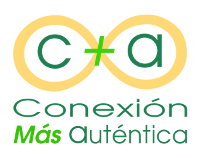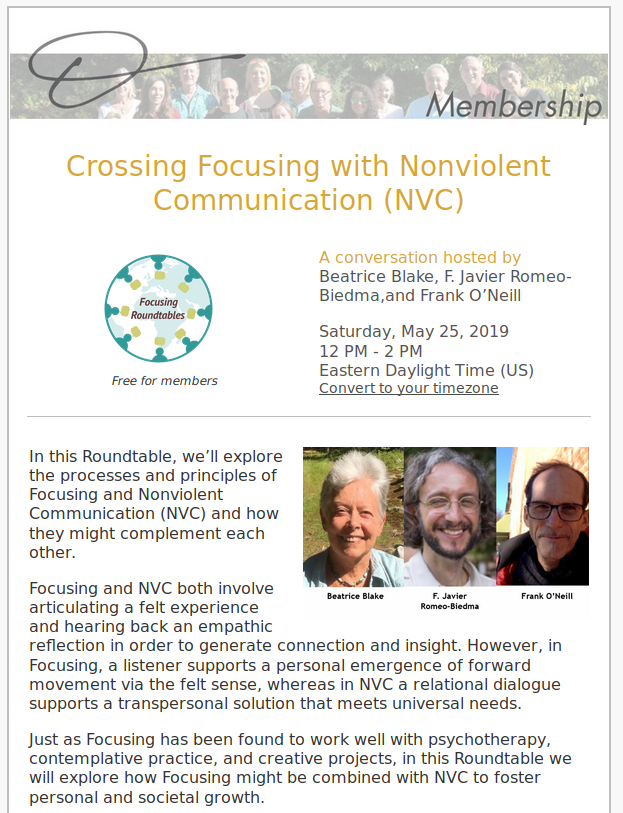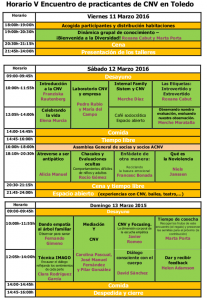Label: Interpersonal communication
Guide “Voices for change. Methodological guide for consulting children, girls and adolescents in residential care”, by Pepa Horno and F. Javier Romeo, for UNICEF Spain
7 October 2021.
Tags: Agenda actual, Interpersonal communication, Education, CI Spirals, My Classifieds, child protection, Other Texts
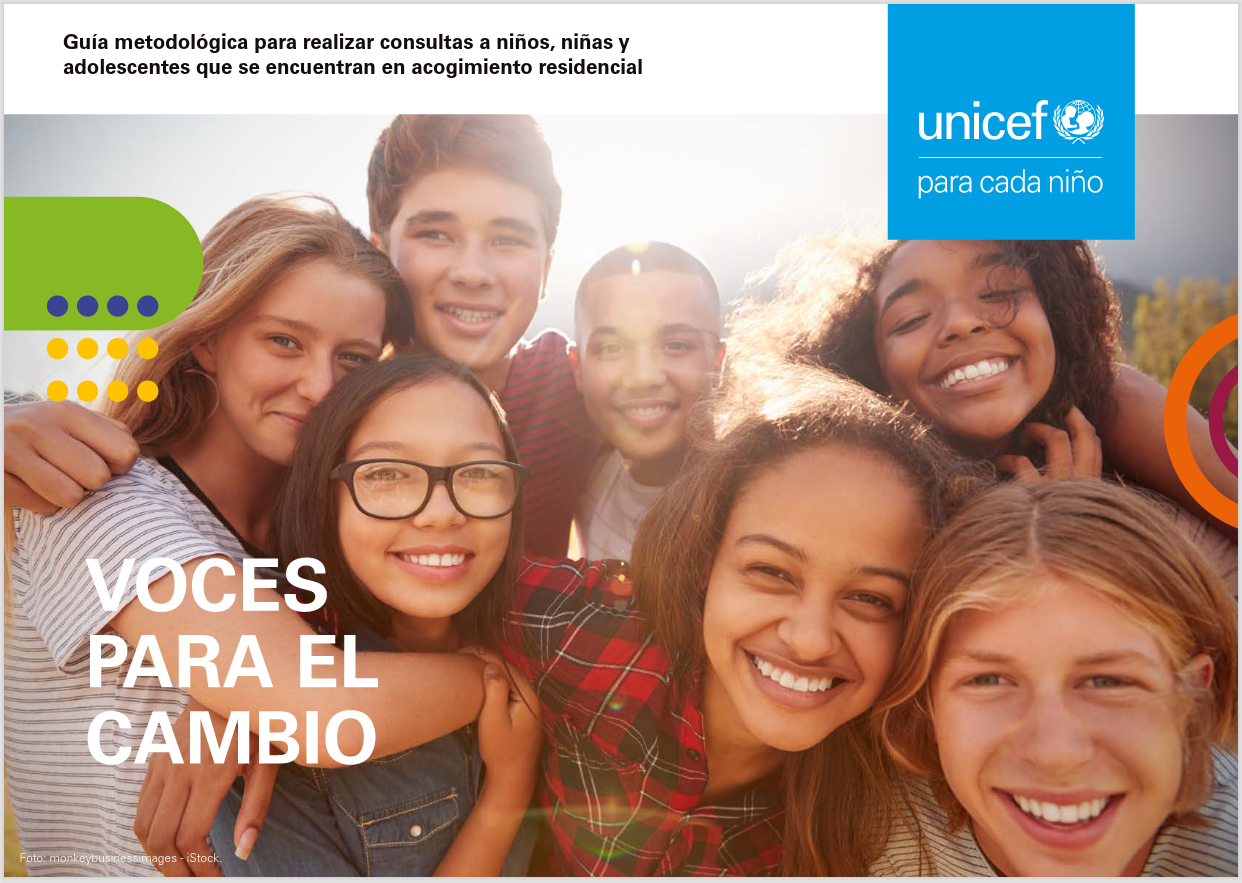 as usual, In this blog I share elements that cross my work in Spiral Consulting Children with other personal and professional interests. In this case I have the satisfaction of sharing the guide Voices for change. Methodological guide for consulting children, girls and adolescents in residential care, what we make Pepa Horno and I stop UNICEF Spain.
as usual, In this blog I share elements that cross my work in Spiral Consulting Children with other personal and professional interests. In this case I have the satisfaction of sharing the guide Voices for change. Methodological guide for consulting children, girls and adolescents in residential care, what we make Pepa Horno and I stop UNICEF Spain.
It was a satisfaction to receive the commission to systematize this methodology in writing in an affordable way.. Part of our work when accompanying public and private entities of protection systems here in Spain and in other countries in their improvement processes consists of having the eyes of their protagonists: children, girls and adolescents living in protection centers. And they are specialists in their own lives, and often the institutions forget to ask them, unfortunately.
That is why it is a great joy that UNICEF Spain, within its work in promoting child and youth participation, has invited us to present a simple methodology to consult these children, and adolescents. We talk more about it in the blog of Spiral Consulting for Children.
Inside it is a technical and practical guide, For me, the aspect of the interpersonal communication: how can we adults talk, how we can create the right space and how we can listen to children, and adolescents. The words we use can open communication or close it, That is why the formulas that we present are very clear.: respect, inclusion and protagonism of the children themselves, and adolescents.
And we have also insisted on flexibility and adaptation to all children, and adolescents, providing guidelines to accommodate the intervention to functional diversity, cultural diversity (especially the unaccompanied migrant boys and girls) and those with mental health issues and trauma. Their voices, as we say in the title, well heard, can make a change for the better in their lives.
I hope you like it and that you find it interesting.
Artículo “We accompany with the person that we are” within the initiative “Renewing from within”
15 September 2021.
Tags: Agenda actual, Interpersonal communication, Education, CI Spirals, Focusing, My Classifieds, For parents, Psychotherapy, Therapy, Experiences
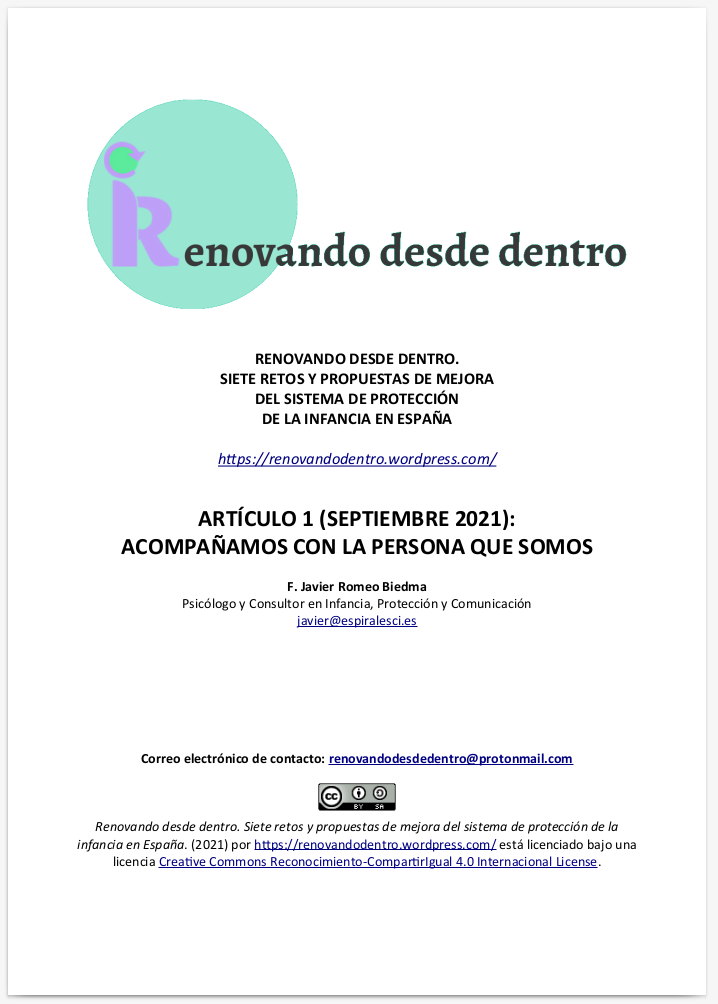 Part of my work as a psychologist and companion in personal and organizational processes consists of finding ways to communicate complex messages through metaphors and analogies.. In the initiative “Renewing from within”, that I already presented in this other post, we set out several challenges and proposals to improve the child protection system, girls and adolescents in Spain (And in the rest of the world).
Part of my work as a psychologist and companion in personal and organizational processes consists of finding ways to communicate complex messages through metaphors and analogies.. In the initiative “Renewing from within”, that I already presented in this other post, we set out several challenges and proposals to improve the child protection system, girls and adolescents in Spain (And in the rest of the world).
This month I have collaborated with the article “We accompany with the person that we are”, that uses analogies between the measures we are taking in the face of the pandemic and the aspects we need to take care of when accompanying children, girls and adolescents who have suffered a lot. It is a way of bringing awareness to our way of being and doing, both personally and professionally.
And you will see that, as usual, I insist on the importance of training in trauma and remember the value of Focusing, I find it a very useful tool on a day-to-day basis..
I would love to know what you think and how you live it.
Listen and be present in times of confinement, my experience on the phone at COP Madrid
13 July 2020.
Tags: Interpersonal communication, Psychotherapy, Therapy, Experiences
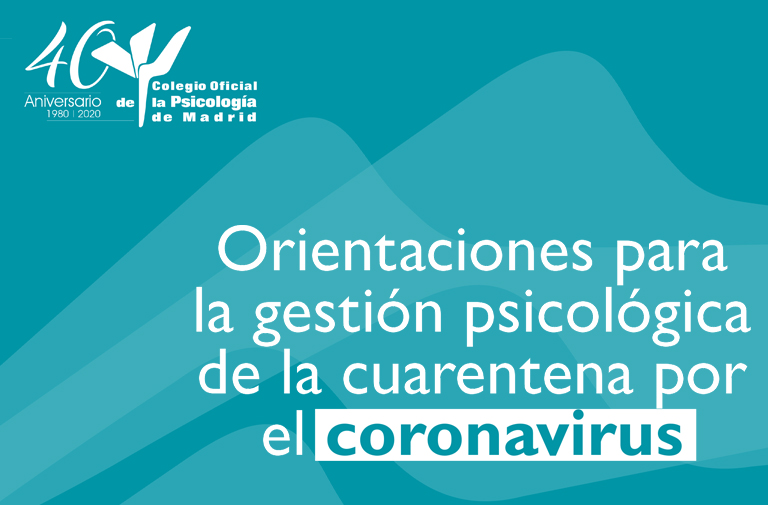 A few days ago I received the certificate as a volunteer from the telephone service of the Official College of Psychology of Madrid. In these moments of “new normal” It has been a reminder of the difficult moments of confinement, between March and May of this year 2020. And from the calm (provisional) actual, It seems like a good time to process what I have experienced. And I have four words to symbolize it: commitment, resistance, humility and conscience.
A few days ago I received the certificate as a volunteer from the telephone service of the Official College of Psychology of Madrid. In these moments of “new normal” It has been a reminder of the difficult moments of confinement, between March and May of this year 2020. And from the calm (provisional) actual, It seems like a good time to process what I have experienced. And I have four words to symbolize it: commitment, resistance, humility and conscience.
When the lockdown started my basic question was “How can I contribute?”. From Spirales Consultoría de Infancia we have received many requests that we have been able to attend to, but that will be the reason for another blog post. But, at the same time, there was another dimension, from volunteering, what did i want to offer. Between the many services and resources what did he offer Official College of Psychology of Madrid, Telephoning people who need it suited me very well. From there, I have felt honored to belong to this organization that has been close to the citizenry as far as its resources have allowed.. This for me has to do with psychology, apart from being my profession, also supposes a commitment personal towards the well-being of individuals and communities. We have seen the commitment of many people and many professional groups, and this has been ours: offer listening and support to those who need it.
The beginning of the telephone attention was intense for me. The calls weren't many, but long and complex. From mourning the death of people to serious mental health difficulties. And my admiration for the ability resistance of every person I cared for. I like to say “resilience”, that word that we like so much in psychology. But “resilience” it implies “to resist” and “remake”, and in a single phone call per person I only got to see the part of “to resist”. When I see the current relaxation in the face of sanitary measures, I remember each person that I attended, with your level of suffering, and I wonder how they will live it. Are they feeling the frustration that it was not done better at the time? Are they enjoying some rest and contact? My memory is with those people who have had such a bad time, and that they will have to find the strength to continue resisting and, hopefully, to reach resilience and rebuild.
All these experiences have awakened in me a lot humility. The coronavirus is generally being a call to conscience, that as human beings we consider how we are doing in the world and look for ways to improve. For me, as a psychologist, all these experiences are assuming a humility cure. There is so much suffering that I will not be able to attend, but whoever arrives, I arrive. There are people with so many difficulties in their mental health that I do not know how to accompany, and I have to continue training. And there are so many things to improve that sometimes I find it hopeless, but my commitment is to continue cultivating hope.
Y, once again, the experience has been for me a call to the consciousness. Faced with human suffering, it is necessary to be not only as a professional, but also as a person. Human contact, how much we have missed during confinement, it is a source of well-being (when it occurs in healthy relationships). The psychological care has been for me to be there present, with empathy and also with my vulnerability (but taking charge of what I live).
And all these experiences now bring me gratitude, both to COP Madrid, especially those who have led the process, as those who have had the courage to call and trust those who attended them. My appreciation to all those people for their courage.
And my best wishes for this new phase.
TIFI Crossing Focusing with Nonviolent Communication (NVC) Roundtable
25 May 2019.
Tags: Agenda filed, CNV, Interpersonal communication, Focusing community, Focusing, Focusing international, In English
Information about the Roundtable on Crossing Focusing and Nonviolent Communication (NVC) organized by The International Focusing Institute through its Membership Committee. As it is a past event the information is no longer available on TIFI’s website and has been edited accordingly.
my article “Combining Focusing and Nonviolent Communication”, translated into Japanese: Intersection of the focusing and the non-violent communication
9 February 2017.
Tags: Agenda actual, CNV, Interpersonal communication, Focusing community, Focusing, Focusing international, In English, My Classifieds, Texts CNV, Textos Focusing
Text in Spanish – Japanese – Click here to read in English
Focusing International Conference in Cambridge (United Kingdom) in July 2016 continues to bear fruit.
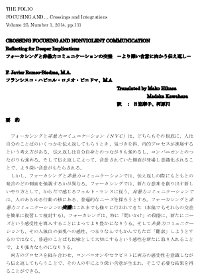 Today I have the honor to present the translation of my article “Combining Focusing and Nonviolent Communication. Reflecting deeper implications for” (appeared in 2014 in The Folio. A Journal for Focusing and Experiential Therapy) Japanese, with the suggestive title “Focusing and non-violent communication intersection of - towards the deeper implications tell-back -“.
Today I have the honor to present the translation of my article “Combining Focusing and Nonviolent Communication. Reflecting deeper implications for” (appeared in 2014 in The Folio. A Journal for Focusing and Experiential Therapy) Japanese, with the suggestive title “Focusing and non-violent communication intersection of - towards the deeper implications tell-back -“.
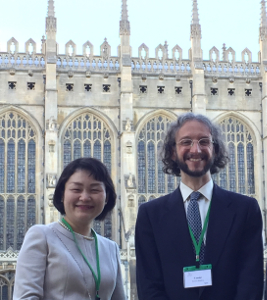
Con Madoka Kawahara (Kawahara circle).
Cambridge had the pleasure to meet Madoka Kawahara (Kawahara circle), Focusing training psychotherapist who had initiated the translation of the article a while back, already Mako Hikasa (Mako Hikasa), Focusing renowned Coordinator, which joined the project in its final phase translation. Our discussions from that meeting made the project proceed, and now there is this careful translation is available on the website Focusing Japanese Association (Japan Focusing Association), and I reproduce here with his permission.
From here I want to express my deep appreciation for their efforts and dedication (there have been many emails back and forth to clarify concepts and terms) so you can know this aspect of Focusing among many practitioners and professionals Focusing Japan.
In deep appreciation,
Cambridge 27th International Focusing Conference, which was held in (the UK)It is、It has brought a more abundant achievements。
 now、I、paper"Intersection of the focusing and the non-violent communication - deeper implications toward tell-back -"("Journal for focusing and experiencing therapy"The Folio. A Journal for Focusing and Experiential TherapyVol. 25, No. 1、2014I am honored to be posted on the year) has been translated into Japanese。
now、I、paper"Intersection of the focusing and the non-violent communication - deeper implications toward tell-back -"("Journal for focusing and experiencing therapy"The Folio. A Journal for Focusing and Experiential TherapyVol. 25, No. 1、2014I am honored to be posted on the year) has been translated into Japanese。

Madoka Kawahara
In Cambridge、Mr. counselor Madoka Kawahara undergoing focusing training Ya、There was a happy encounter with renowned certification focusing Coordinator Mako Hikasa。Because、And Ms. Madoka Kawahara is already working on this translation、And in the final stage of the project、Mako HikasaIt has been added。After the International Conference、Keep in touch us towards the translation completed、Then now、The exact Japanese translation has been completed。this is、Japan focusing association's Web siteYou can read in。Than the association、We received the authorization of the link posted。
To me is a certain enthusiasm and their interest effort、Deeply Thank you。In order to clarify the concepts and nuances、It was frequently exchanged e-mail。Many of certified Focusing trainers and practitioners of Japan、Because becomes an opportunity to get to know this aspect of focusing。
Gratitude
The International Focusing Conference 2016 in Cambridge (United Kingdom) keeps bringing more fruits.
 Now I have the honor of presenting my article “Crossing Focusing and Nonviolent Communication: Reflecting for Deeper Implications”, that appeared in The Folio. A Journal for Focusing and Experiential Therapy in 2014, translated into Japanese with the title “Focusing and non-violent communication intersection of - towards the deeper implications tell-back -“.
Now I have the honor of presenting my article “Crossing Focusing and Nonviolent Communication: Reflecting for Deeper Implications”, that appeared in The Folio. A Journal for Focusing and Experiential Therapy in 2014, translated into Japanese with the title “Focusing and non-violent communication intersection of - towards the deeper implications tell-back -“.

With Madoka Kawahara (Kawahara circle).
In Cambridge I had the pleasure of meeting Madoka Kawahara (Kawahara circle), a psychotherapist trained in Focusing who had already started the translation some time ago, and Mako Hikasa (Mako Hikasa), a renowned Focusing Coordinator that joined the project in its final stages. The conversations we had after that encounter have brought the work to its completion, and now we have this precise translation, that is available on the website of the Japan Focusing Association (Japan Focusing Association), reproduced here with permission.
I want to express my profound gratitude for their interest and hard work –there have been lots of e-mails to clarify concepts and nuances– to make possible that this aspect of Focusing might be known among the numerous Focusing professionals and practitioners in Japan.
In gratitude,
Vídeo de Gene Gendlin: “We are different when interacting with different people”
31 January 2017.
Tags: Interpersonal communication, Focusing community, Eugene Gendlin, Focusing, Focusing international, In English, Textos Focusing
Today I want to share this video posted by the International Focusing Institute (The International Focusing Institute) de Gene Gendlin, the father of Focusing, in which he talks about how “we are different when we interact with different people”. In this short but rich recording, Gendlin explica (with Spanish subtitles, that can be turned on and off) that this has the consequence that by sharing something of ours with another person, the very act of being with the other person facilitates the change.
A suggestive and inspiring video. Hope you enjoy the.
Xavier
Book “Stop being nice; I truly! illustrated edition” Thomas Ansembourg
20 May 2016.
Tags: CNV, Interpersonal communication, Texts CNV
ANSEMBOURG, Thomas. Stop being nice; I truly! illustrated edition. Messenger, 2015.
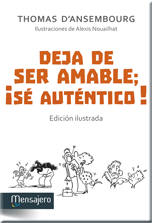 Thomas Ansembourg It is an international reference in Nonviolent Communication (and a personal reference for me, since my training in the CNV started with him and his accompanying delved). Now he shares his deep understanding of human nature and compassionate view of conflicts with a fully illustrated version (almost comic format) his first book, Stop being nice; I truly!, a bestseller and an inexhaustible resource for reflection.
Thomas Ansembourg It is an international reference in Nonviolent Communication (and a personal reference for me, since my training in the CNV started with him and his accompanying delved). Now he shares his deep understanding of human nature and compassionate view of conflicts with a fully illustrated version (almost comic format) his first book, Stop being nice; I truly!, a bestseller and an inexhaustible resource for reflection.
In this booklet, with illustrations Alexis Nouailhat, so simple and suggestive, Thomas d'Ansembourg his personal history (Chapter 1, “Who is this guy?”), analyzes with humor and clearly some of the basic problems we face as a people (Chapter 2, “Want to get out of the traps?”) and proposes “Some notions of Nonviolent Communication” (Chapter 3) to begin transforming our consciousness (and thereby transform our relationships and our lives), and closes with a successful “conclusions”.
With humor and apparent lightness, This book helps us pay attention to our life, with greater presence and processing capacity. It is a joy that it has released Editorial Mensajero, and it's possible see a sample of the index and some illustrations on their website.
Hope you enjoy it as much as the IM.
Xavier
Workshop on CNV and Focusing at the V Meeting of Nonviolent Communication Practitioners 11-13 March 2016 Toledo
13 March 2016.
Tags: Agenda filed, CNV, Interpersonal communication, Focusing, Training, My Classifieds
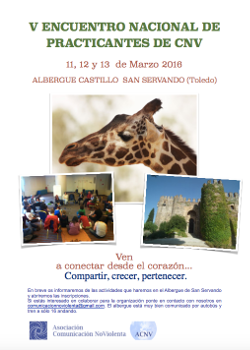 One more year, It is a joy and an honor for me to return to participate in the V Meeting of Nonviolent Communication Practitioners organized by the Association for Nonviolent Communication, facilitating my workshop this year “Nonviolent Communication and Focusing. The bodily dimension of needs”.
One more year, It is a joy and an honor for me to return to participate in the V Meeting of Nonviolent Communication Practitioners organized by the Association for Nonviolent Communication, facilitating my workshop this year “Nonviolent Communication and Focusing. The bodily dimension of needs”.
Full event dates: Friday 11 to Sunday 13 March 2016.
Place: Hostel San Servando
Cuesta de San Servando s / n
Toledo
To read the full information, request clarification and register, go to specific web page of the event.
To learn a little about the theoretical bases of what we are going to work on, since Marshall Rosenberg himself was part of the process of Focusing in some listening sessions and recommended it, You can consult my article “Combining Focusing and Nonviolent Communication. Reflecting deeper implications for”, published in the issue of 2014 of The Folio. A Journal for Focusing and Experiential Therapy, the official academic journal The Focusing Institute (Focusing Institute of New York).
I hope we can see each other there.
Xavier
[Original entry 1 March 2016, actualizada a 13 March 2016, event end date].
Trilogy “Human: The movie” Yann Arthus-Bertrand: to educate in listening
31 January 2016.
Tags: CNV, Interpersonal communication, Focusing, Videos, Experiences
I love to recommend works that are originally targeted to the general public for training in disciplines such intimate and profound as the Focusing and the Nonviolent Communication. This trilogy falls into that category.
“Human: The movie” It is a documentary trilogy as shows fragments of interviews with more than two thousand people (although in the final version of a selection of some two hundred people it appears) talking about all the things that make us “humans”. People of all ages (although very few children appear, and adolescents in proportion, and all of them very hard stories), of all kinds, from all continents. It is a sobering experience, very direct: no questions from interviewers, without dubbing (all interventions appear with subtitles, so you can hear the original voice), no source data of each person (In some cases only mentioned his country, but in most cases you can only intuit their continent, unless the subtitles are activated), bottomless (All interviews were made with the same dark background, although sometimes surrounding sounds are introduced). With people who listen and look at the camera while others speak, and nothing more. And occasionally, aerial views of breathtaking landscapes, natural landscapes and human landscapes, with world music (that are especially evocative when using without relation to the image: an African landscape with distinctly Asian music, for example, again underlining the universality of human).
Photographer and filmmaker Yann Arthus-Bertrand, He is known for his long career defending ecological and social causes, It has embarked on this magnificent trilogy, It intended as a further contribution to a portrait of a human being in its various dimensions. With its lights, and also with major shadows. The look of the film encompasses everything: from the best to the worst, freeing and enslaving, what it gives meaning and absurdities of modern life…
some thematic structure is perceived, which may be mentioned by way of guidance:
“Human: The movie (volume 1)”: love (in its various forms), work and poverty. Intense from the first minute, a reflection on these three elements of human life.
“Human: The movie (volume 2)”: war, homophobia, death and difficulties in the family. More clearly positioned in favor of human dignity in all situations, although it is difficult to recognize.
“Human: The movie (volume 3)”: the happiness, The education, disability, the relationship with the land, The meaning of life, justice and social action. A look at specific aspects that require our position (better for humanity, lets understand the message selection).
It is a work that deserves to be seen calmly, fragments of twenty or thirty minutes, to digest depth. It raises many questions and invites us to respond from the inside. you can also see extensive fragments of some of the people, which can be selected by their subject or message, and they include people who sometimes fail to appear in the film.
And those who see every film we can choose: ¿We classify each person according to the snippet of it? Or will we be able to hear opening, trying to see it with your feelings and your needs, with the feelings that must have in your life to talk like, with his humanity and his mystery?
I invite you to see movies and you to discover a little more of our shared humanity, and the human of each particular.
Xavier
my article “Play the yes’ in the 'no'” (2011)
14 December 2015.
Tags: CNV, Interpersonal communication, Education, CI Spirals, My Classifieds, For parents, Texts CNV
This weekend I had the honor of participating in the I Congress on Emotional Education Navarra, organized by Formed parents. It was a conference organized with great interest, with great care and a good dose of courage. My presentation was specifically about “Affective education that protects against sexual abuse”, one of the themes that work from Spiral Consulting Children, of which I am a founding member. But in the end there was a panel discussion with questions for all speakers, we were sharing with the moderation of Sonsoles Echevarren, journalist from Diario de Navarra. It was a very interesting time, and although the questions were addressed to each speaker, at the end there were many in which we participate several more. In this context a very interesting question arose, “How do you listen to a child who refuses to leave the park?”. interesting and valuable answers were given, and I brought my contribution: “Listening yes’ in the 'no'”.
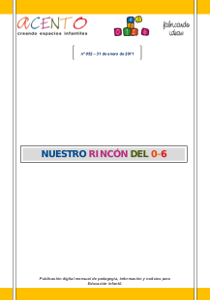 Rescue in this blog because my article 'Listen to “yes” in the “no”‘, which it was published in the number 52 (January 2011) Magazine Our corner of 0-6, published by ACCENT (He continues no longer releasing new numbers, although still available). This article development more broadly what I argued then: When a person (and a boy or girl is also a person) dice “no”, He is saying “yes” many things, and if we listen to the entire message, we can create a deeper connection and find a satisfactory solution for all parties. The article begins:
Rescue in this blog because my article 'Listen to “yes” in the “no”‘, which it was published in the number 52 (January 2011) Magazine Our corner of 0-6, published by ACCENT (He continues no longer releasing new numbers, although still available). This article development more broadly what I argued then: When a person (and a boy or girl is also a person) dice “no”, He is saying “yes” many things, and if we listen to the entire message, we can create a deeper connection and find a satisfactory solution for all parties. The article begins:
mother, two and a half years, She does not want her coat to go outside. Joseph, four years, You do not want to lose the swing to go home. Irene, of five years, He does not want to go to sleep. Why not do those things that as adults we seem perfectly reasonable?
And what do we do next? ¿We yield and do what they want? Then we feel bad because we are not working to their education, and also it gives us the feeling of leaving aside what we as people also want. Would you force them to do what we want? Then we have guaranteed discussion and bad environment for a long time, long term and we are teaching them that in the end the important thing is to have power or strength, and that dialogue only serves when it is weak. In my personal and professional experience there is a third way, based on a deeper communication in each of these situations. And one of the skills that we developed in the workshops I facilitate is the ability to listen to what they say “yes” our children when they say “no”.
Download the full article “listen to the “yes” in the “no”‘
Hope you find it interesting.
Xavier
